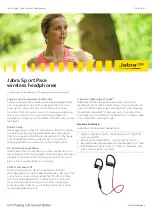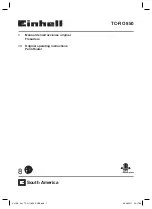
LAN
- A communications network that serves users within a confined geographical area. It is made up of
servers, workstations, a network operating system and a communications link. Servers are high-speed
machines that hold programs and data shared by network users. The workstations (clients) are the users'
personal computers, which perform stand-alone processing and access the network servers as required.
Diskless and floppy-only workstations are sometimes used, which retrieve all software and data from the
server. Increasingly, "thin client" network computers (NCs) and Windows terminals are also used. A
printer can be attached locally to
a workstation or to a server and be shared by network users. Small LANs
can allow certain workstations to function as a server, allowing users access to data on another user's
rvers
arge
ged by a transport protocol such as TCP/IP and NetBEUI. The physical
transmission of data is performed by the access method (Ethernet, Token Ring, etc.), which is
k adapter.
machine. These peer-to-peer networks are often simpler to install and manage, but dedicated se
provide better performance and can handle higher transaction volume. Multiple servers are used in l
networks.
The message transfer is mana
implemented in the network adapters that are plugged into the machines. The actual communications
path is the cable (twisted pair, coax, optical fiber) that interconnects each networ
MAC Address
- MAC (Media Access Control) A MAC address is the hardware address of a device
connected to a network.
MDI / MDI-X
- Medium Dependent Interface - Also called an "uplink port," it is a port on a network
hub or switch used to connect to other hubs or switches without requiring a crossover cable. The MDI
port does not cross the transmit and receive lines, which is done by the regular ports (MDI-X ports) that
connect to end stations. The MDI port connects to the MDI-X port on the other device. There are
typically one or two ports on a device that can be toggled between MDI (not crossed) and MDI-X
(crossed).
Medium Dependent Interface
– X (crossed) - A port on a network hub or switch that crosses the transmit
lines coming in to the receive lines going out.
MP3
– MPEG Audio Layer 3. This is an audio compression technology that is included in the MPEG-1
of 12.
and -2 specifications. MP3 encoding can allow you to compress CD-quality sound by a factor
MPEG
– Moving Pictures Experts Group. MPEG is a standard for compressing video. MPEG-1 can
,
provide resolution of 352x240 at 30 frames/second (fps) with 24-bit color and CD-quality sound. MPEG-2
can provide resolution of 704x480. MPEG uses the same intraframe coding as JPEG for individual frames
but also uses interframe coding which can help to further compress the video data, thereby reducing the
overall size of the video.
NAT
– (Network Address Translation) This process allows all of the computers on your home network to
use one IP address. The NAT capability of the Barricade, allows you to access the Internet from any
resses from your ISP. Network
Address Translation can be used to give multiple users access to the Internet with a single user account, or
es your
ou to change
ide
computer on your home network without having to purchase more IP add
to map the local address for an IP server (such as Web or FTP) to a public address. This secur
network from direct attack by hackers, and provides more flexible management by allowing y
internal IP addresses without affecting outside access to your network. NAT must be enabled to prov
multi-user access to the Internet or to use the Virtual Server function.
70
Summary of Contents for Barricade SMCBR14UP
Page 1: ......








































